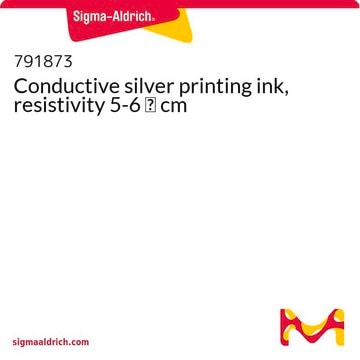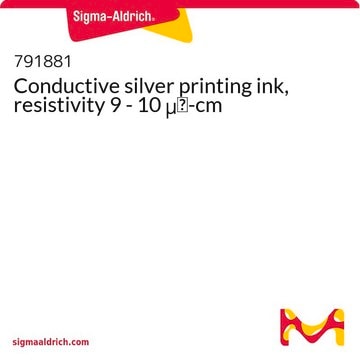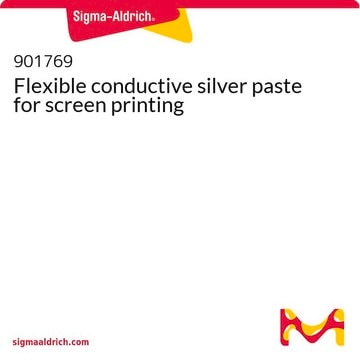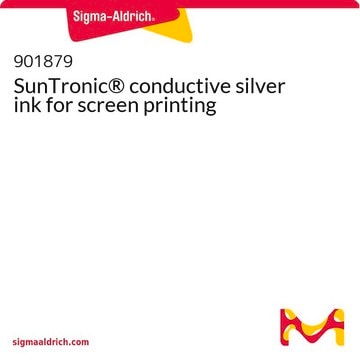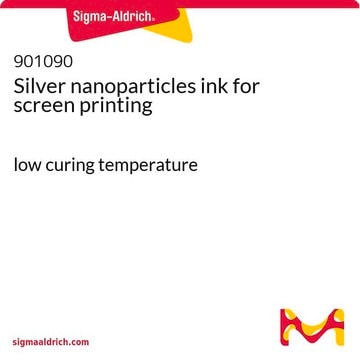791903
Conductive silver printing ink, resistivity 30 - 35 μΩ-cm
Synonim(y):
Dyesol® DYAG350 conductive silver ink, Screen printable silver paste
About This Item
Polecane produkty
opis
volume resistivity 30 - 35 μΩ-cm at a 180°C cure temperature
Postać
paste (white)
skład
Solids content, 65-75%
lepkość
6000-9000 mPa.s (at shear rate of 10 sec-1 at 25°C)
Opis ogólny
Zastosowanie
This Conductive Silver Printing Ink is comprised of a mixture of pure silver particles and organometallic silver compound in an organic medium. When printed on polyester (PET or PEN) films and then cured at 150 - 180°C, the particles consolidate to form a chemically-welded, continuous silver track to yield low bulk resistivity.
Informacje prawne
Hasło ostrzegawcze
Warning
Zwroty wskazujące rodzaj zagrożenia
Zwroty wskazujące środki ostrożności
Klasyfikacja zagrożeń
Aquatic Acute 1 - Aquatic Chronic 1 - Eye Irrit. 2 - Skin Irrit. 2
Kod klasy składowania
10 - Combustible liquids
Klasa zagrożenia wodnego (WGK)
WGK 3
Temperatura zapłonu (°F)
174.2 °F
Temperatura zapłonu (°C)
79 °C
Certyfikaty analizy (CoA)
Poszukaj Certyfikaty analizy (CoA), wpisując numer partii/serii produktów. Numery serii i partii można znaleźć na etykiecie produktu po słowach „seria” lub „partia”.
Masz już ten produkt?
Dokumenty związane z niedawno zakupionymi produktami zostały zamieszczone w Bibliotece dokumentów.
Klienci oglądali również te produkty
Produkty
The ability to pattern conductive electrodes is technologically relevant for several applications, including photovolatics, displays, sensors, and biomedical devices.
Small molecular weight organic semiconductors are promising for flexible transistor applications in next-gen soft electronics.
Dye-sensitized solar cells (DSCs) are 3rd generation solar cells combining the promise of high efficiency with low production costs.
Professors Tokito and Takeda share design principles and optimization protocols for organic electronic devices, focusing on flexibility and low cost.
Nasz zespół naukowców ma doświadczenie we wszystkich obszarach badań, w tym w naukach przyrodniczych, materiałoznawstwie, syntezie chemicznej, chromatografii, analityce i wielu innych dziedzinach.
Skontaktuj się z zespołem ds. pomocy technicznej